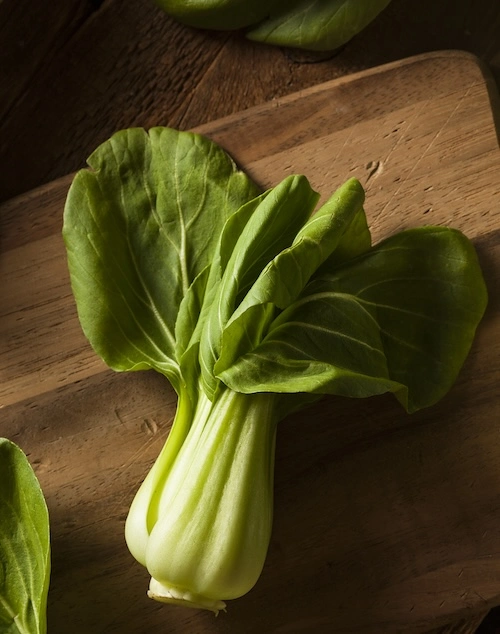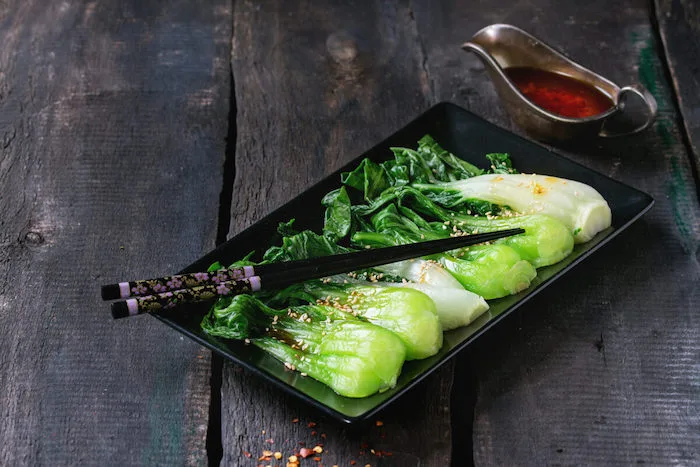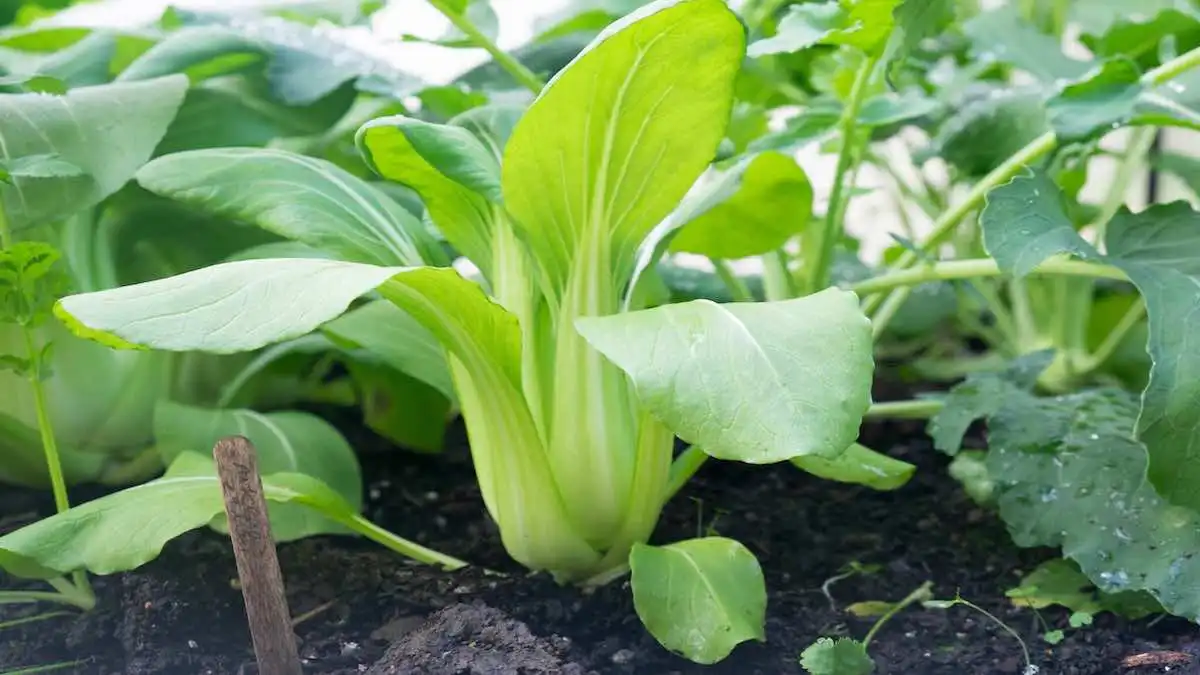Table of contents
Pak Choi Growing Tips
The first thing to make clear in our pak choi growing tips is that pak choi and bok choi are often confused. Bok Choy has a white stem, while Pak Choi has a green stem. Pak Choi looks like a squat celery with pale green, short stalks and green leaves.
Consequently, as with many things, Australians use the two names for this leafy Asian green interchangeably. However, there are a number of varieties you can choose from, including Osaka Purple, Choi Sum, and Joi Choi.

Pak Choi Growing from Seed
Ultimately, whether you call it Pak Choi, Bok Choy or Chinese cabbage, it is an excellent leafy green to grow in the dry season in the tropics.
Pak Choi Growing Stages
Time needed: 4 minutes
How do I grow pak choi from seed?
- Sowing
Sow your seeds at a depth three times the diameter of the seed.
- Water
Water regularly to make sure soil remains moist.
- Germination
Sprouts should emerge in around 6 to 12 days.
- Time and space
The dry season is the time to grow this plant in the tropics, as they prefer the slightly cooler temperatures. Space plants 30-40cm (12-15in) apart.
- Harvest
You should have something to harvest in 6-11 weeks. You can harvest the whole plant or you can pick a few leaves at a time, leaving the others behind to grow bigger.
Pak Choi Growing Time
Semi-mature or full-sized pak choi should be ready harvest in 45–75 days, when still compact and firm.
Pak Choi Growing Season
Yes, pak choi is ideal as a winter crop, as it thrives in cooler temperatures.
Pak Choi Growing Temperature
The preferred soil temperatures are between 21°C and 30°C (70F and 86G), making it suitable for winter planting in many regions.
Can I Grow Pak Choi in Winter?
Yes, you can plant this vegetable in winter as it prefers cool weather and tolerates light frost. It grows best in temperatures between 10°C and 24°C (50F and 75F), making it a great choice for winter gardens in mild climates.
Pak Choi Growing Conditions
Location and Soil
Choose a spot that enjoys full sun. Also remember to plant in rich, moist soil, well draining soil, with plenty of well rotted compost in it.
Fertilising
One of our tips is to apply natural fertilisers such as fish emulsion every month for the best results.
Watering
Pak Choi is best grown in the dry season in the tropics, so it will need regular watering. However, one good watering a day should do the job.
Pests and Diseases
Pak Choi is attractive to a number of pests that can do serious damage. Indeed these include aphids, slugs, leafminers and whiteflies.
The best advice to avoid pests when growing pak choi is to rotate crops and only use pathogen-free seed. However you can apply fungicides if and when problems emerge.
Regular application of ‘white oil’ can help address these pests. So white oil is an effective organic pesticide that you can make at home. However neem oil also does a great job. In addition, it is organic and does not kill beneficial insects with hard shells or bees.
Pak Choi Growing in Pots
In the tropics and sub-tropics, we recommend you grow in pots or containers. I have a heavy ‘clay’ soil, which is not the best growing medium.
However, my containers have lose well-draining soil, full of organic material. This is better for most vegetables.
Eating Ideas
Pak choi can be eaten raw in salads, or you can put it on a sandwich instead of lettuce. However, most commonly it is eaten cooked. Consequently, this includes on the stovetop in a soup, as a stir-fry or in fried rice dish.

Health Benefits
Pak choi growing can have real health benefits when it comes time to consume your produce.
Weight Loss
Eating high fibre foods such as pak choi can help you lose weight. Such foods are very low in calories and also increase you feelings of ‘fullness’ when having a meal.
Fibre
Eating this vegetable also aids digestive health and may help to prevent constipation.
Immune System
In addition, the mineral selenium in this vegetable improves the immune response to infection by stimulating the production of T-cells. Indeed these T-cells can help to combat invading bacteria and viruses.
Antioxidants
Furthermore, pak choi is rich in antioxidants that may help protect your cells from oxidative damage. Consequently, this can reduce your risk of having a number of chronic diseases.
Thank you for reading and all the best with your pak choi growing.
Other Tropical Vegetables
- Capsicum
- Cucumber
- Eggplant
- Jicama
- Kangkong
- Malabar Spinach
- Perpetual Spinach
- Pumpkin Growing
- Snake Beans
- Sweet Potato
- Tatsoi Growing


Comments
One response to “Pak Choi Growing Guide”
[…] Pak Choi […]